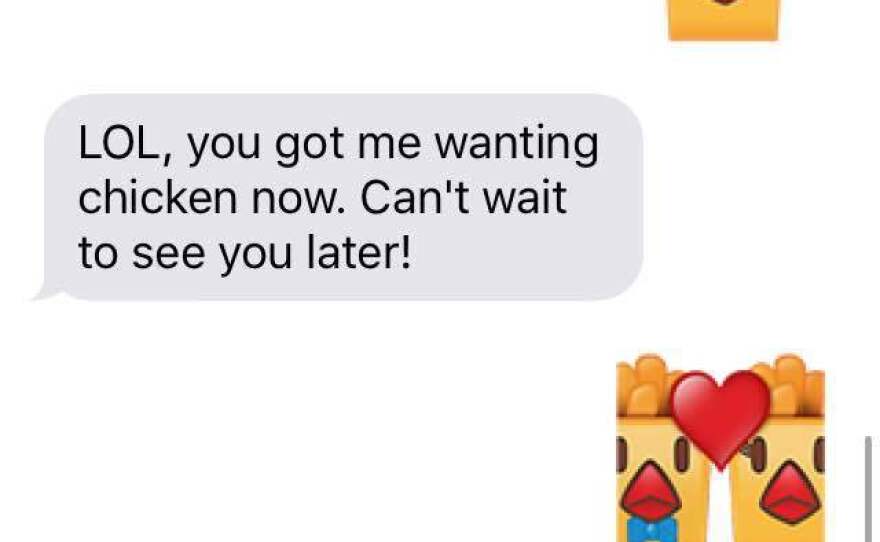
Here are two obvious statements: One, many teenagers love fast food. Two, many of them hate listening to adults. And these are real problems if you're a fast food company.
Increasingly, companies like Taco Bell and McDonald's are trying very hard to reach teens like me by using social media. Over the past few months, I've been working with NPR business reporter Sonari Glinton to examine how well some of these campaigns are working — including asking some of my friends at Youth Radio to weigh in.
While they generally like the humor in brand campaigns, Nila Venkat explains: "It makes me think they are funny on social media. Doesn't mean I want to eat their hash browns."
That doesn't surprise Lauren Johnson, a digital marketing reporter at Adweek. "Social media and millennial marketing is an extremely tough area for brands right now," she says. "The agencies tend to be a bit older, so they're trying to understand what millennials talk about with their friends, and how that can be translated into marketing that feels that same way."
On the one hand, the goal of these companies isn't new. Since the birth of modern marketing, businesses have been trying to reach the elusive teenager. But as Sonari points out, when he was a teen 23 years ago, marketing was a form of one-way communication — companies speaking to teens via TV commercials or print ads. New technology has brought new expectations. Teens today expect brands to engage with them online 24/7. And some companies are doing a better job than others.
Marketing experts say Taco Bell's laid-back approach is one to watch. But it's tough to say how much, if any, of its success is due to social-media savvy. So we decide to go to the belly of the beast — the belly of the Bell, if you will — Taco Bell headquarters in Irvine, Calif.
Taco Bell's command center is as cool as can be for a corporate office. The break room has a soda fountain complete with Taco Bell cups. We meet with the company's chief marketing officer, Marisa Thalberg, in a room called "the fishbowl."
"We have lots of screens where we can see everything that's going on in social media about the brand and about the world," Thalberg says of the room. "Which is great, because it keeps us really plugged in."
Taco Bell prides itself on being a pioneer in engaging with consumers on social media platforms like Snapchat and Twitter. This past November, taking advantage of the newly created taco emoji, the company launched a social campaign called #TacoEmojiEngine, consisting of 600 gifs and photos.
Thalberg explains how it works: "If you tweet at Taco Bell and type the taco emoji plus any other emoji, you're going to get tweeted back an original piece of content. You could do it right now, while we're talking. Go to Twitter."
So we do. One of my producers tweets a taco and a unicorn emoji. Within seconds, she receives a video of a horse eating a taco and turning into a unicorn.
Cool, I think. But it doesn't really make me want to eat Taco Bell.
And that's the thing: Just because a brand makes teens laugh doesn't mean they'll buy its products, or confirm that the companies are even on the right track.
I tell Thalberg that I think Taco Bell's social media brand is interesting in that it is "self-aware."
There's a big pause.
"What do you mean by self-aware?" she asks.
I think about it. "Like, hmmm ... like a stoner-at-midnight vibe," I say.
Quicker than you can tweet a video of a taco-eating unicorn, she says: "I really don't think that's our vibe. I think that implies ... the stereotype of Taco Bell, but not at all who we are. I think what makes us unique is that there's an authenticity to who we are that makes us feel like a likable friend."
She acknowledges that this sounds like a typical brand response. And it does. In my opinion, that's too bad. Why don't they just embrace the stoner vibe? Maybe that would give them the kind of authenticity that appeals to the tricky teen demographic.
But it's clear to me and Sonari that fast food brands don't always understand what it's like to be a teenager. And even if they do manage to impress teens someday, those kids will soon become adults — and companies will have to move on to the next group of teens ... and the next media revolution.
This story is part of a series reported in collaboration with Youth Radio on the future of fast food. NPR business reporter Sonari Glinton contributed to this report.
What are your options for inexpensive meals in your area? What can you get for $5 or less? Share your photos of your #5dollarchallenge meal on Twitter or Instagram – be sure to flag @youthradio. (And remember to direct message @youthradio if you've got a private account!)
Copyright 2016 Youth Radio. To see more, visit Youth Radio.






